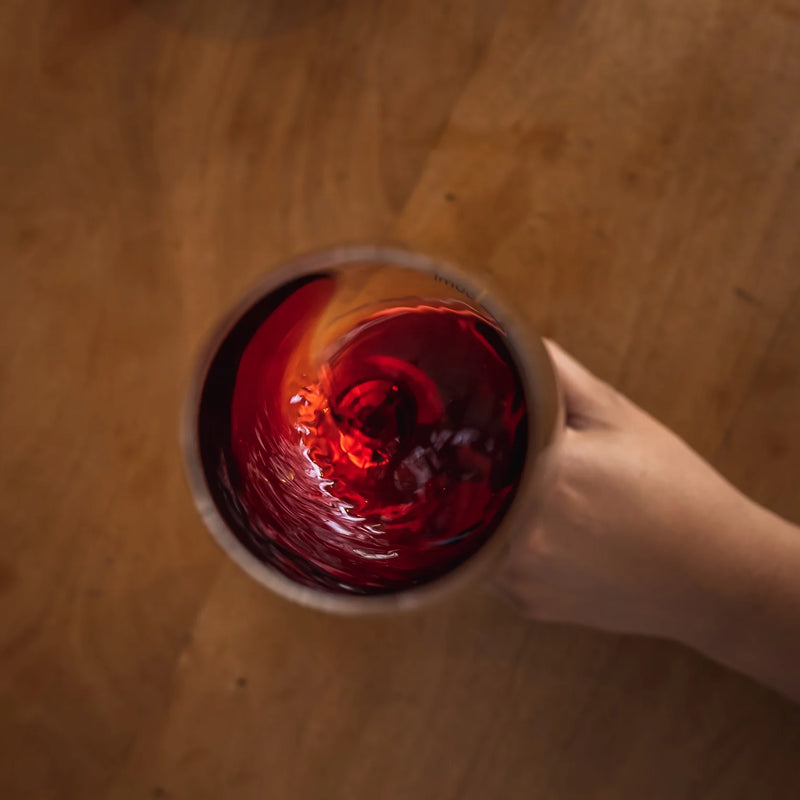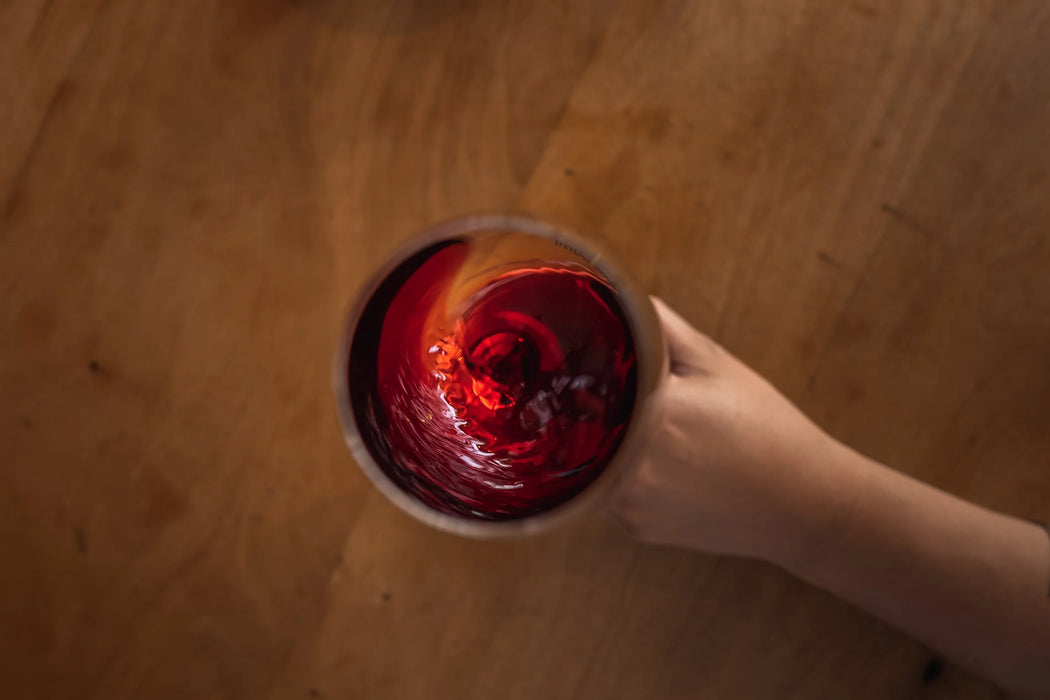
Carménère
One of the six grapes allowed in a Bordeaux red blend.
Kar-meh-nehr
Parents & Origin: Bordeaux varieties (Southwest France) Grape: Small, spherical, dark skin Flavors: Cherries, blackberries, and spice Notable Regions: Chile, Italy, Argentina, United States Sweetness: Dry Body: Medium Tannins: Medium Acidity: Medium-High ABV: 13-15%

The History of Carménère
Carménère is one of the most ancient European wine varietals, having originated as one of the six original red Bordeaux grapes (along with Cabernet Sauvignon, Cabernet Franc, Merlot, Malbec, and Petit Verdot). Some speculate that Carménère may even be the “grandfather” of Bordeaux wines, as it was very popular in France alongside Cabernet Franc until Cabernet Sauvignon and Merlot took hold in the mid-18th century.
Unfortunately, most of France’s Carménère vines were destroyed around 1867 when a phylloxera plague afflicted almost all European vineyards. While many varieties were quickly replanted, Carménère fell out of favor due to its scarcity and the warmer climate it requires compared to other Bordeaux grapes.
Around the same time, however, Chilean growers in Bordeaux brought Carménère back to their home country, where the milder climate made it especially suitable for the region. Due to the grape’s close similarity to Merlot, much of Chile’s early Carménère production was mistaken for its cousin and inadvertently blended into Chilean Merlot in quantities up to 50%. This confusion lasted for quite some time, as Carménère was not recognized as a distinct varietal in Chile until 1998.
At the same time, a similar mix-up occurred in Italy, where Carménère was introduced in 1990 as what were thought to be Cabernet Franc vines. Producers quickly noticed the difference, and now Carménère has a presence in Italy, despite the near-complete absence of the grape in neighboring France. Today, however, Carménère is above all, a Chilean wine, having been embraced as a distinct and flavorful varietal since its official recognition.
Interesting Fact: Carménère has a unique flavor profile that some compare to IPA beer. Some wine enthusiasts even recommend Carménère as a jumping point into wine for beer fans due to the similarities of its flavors, aftertaste, and complexity.
Carménère Food Pairings
Due to its relative mildness compared to other wines of Bordeaux origin, Carménère, in fact, pairs with a lot of dishes.
The Best Carménère Food Pairings
Carménère’s savory flavors pair wonderfully with leaner grilled meat, such as pork and lamb, especially when served with herbal accouterments like chimichurri, salsa verde, or mint. Any grilled, smoked, or roasted meat will do, however, as well as some hard cheeses and spicy dishes.
Food Pairings to Avoid with Carménère
Like most red wines, Carménère is not ideal for very light dishes that its character might overpower. However, the wine is noted for its versatility; some find it a suitable red even for fish or chicken, due to its relative gentleness.
Carménère Tasting Notes

Varietal Carménère is prepared from at least 75% Carménère grapes, with any additional grapes usually being Merlot or Cabernet Sauvignon. Much more moderate in flavor and boldness compared to other Bordeaux varieties, it is usually best consumed while young. When produced with grapes at optimal ripeness, Carménère imparts an overall fruity flavor with savory, smoky, and spicy notes. Common aromas include red fruits, berries, and spices.
Carménère's Delicate Flavors
Carménère grapes are quite difficult to grow, and flavor output can be heavily affected by aberrations in the production process. Most prominently, the grapes require moderate irrigation compared to many wines; over-watered Carménère often has more notes of herbs and green pepper.
Temperature can also play a role, as a too-cold climate has a risk of plague, while too-hot climates produce high-alcohol wines with poor balance. Furthermore, Carménère grapes must be harvested approximately three to seven days later than Merlot to achieve optimal ripeness.
Carménère in a Nutshell
Despite its noble origins as an original Bordeaux grape, Carménère never truly found a home until it was transported an ocean away from its homeland. Even then, it still took a century before it was truly recognized as a quality wine varietal. Thankfully, Carménère now has achieved status as one of Chile’s most prominent and beloved wines. Known for its great pairings with grilled meats and savory sauces, Carménère offers a more moderate and versatile tasting experience than most Bordeaux varietals. So whether you want a unique pairing for your next barbecue or simply want to experience the cutting edge in Chilean winemaking, a bottle of Carménère is essential for your collection.
Ready to learn more? Don't forget to check out our other wine guides:
Red Wine GuideSparkling Wine Guide
White Wine Guide
Rosé Wine Guide
Dessert Wine Guide





